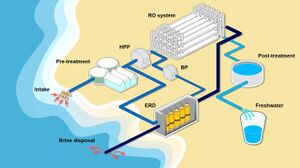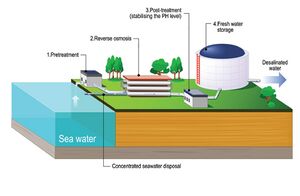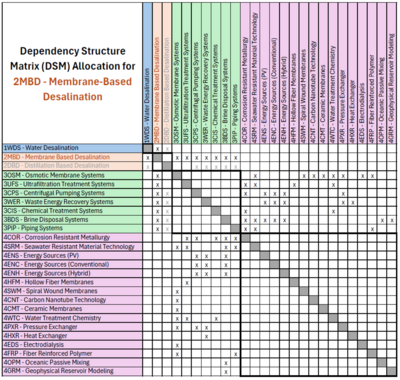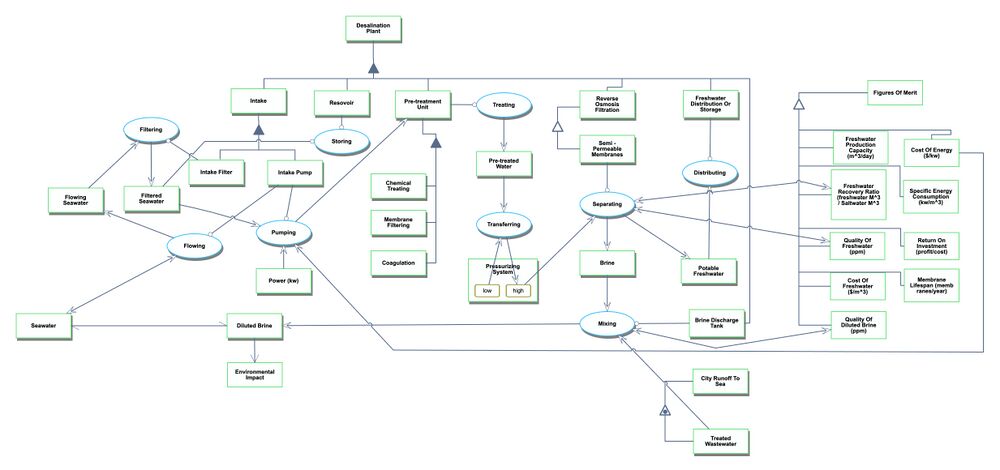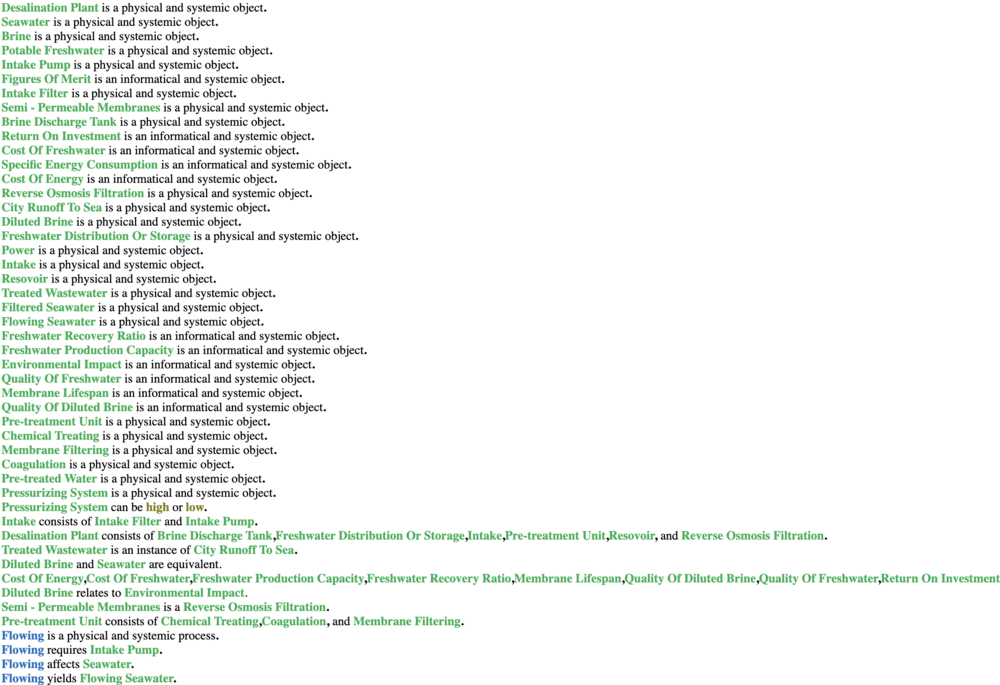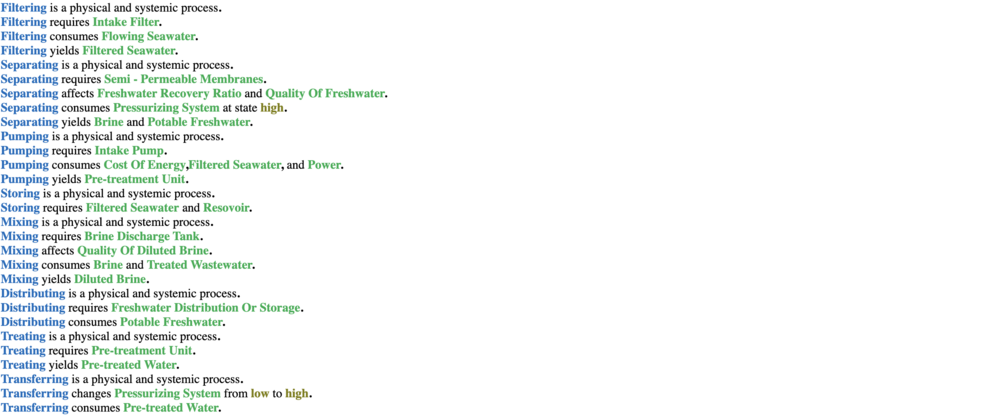Difference between revisions of "Water Desalination"
| Line 29: | Line 29: | ||
[[File:Water desalination OPD.jpeg|1000px|OPD for 2MBD]]<be> | [[File:Water desalination OPD.jpeg|1000px|OPD for 2MBD]]<be> | ||
An Object-Process-Language (OPL) description of the OPD is displayed below. | An Object-Process-Language (OPL) description of the OPD is displayed below. | ||
[[File:Water desalination opl 1.png|1000px|none|OPL for 2MBD]] | [[File:Water desalination opl 1.png|1000px|none|OPL for 2MBD]] | ||
[[File:Water desalination opl 2.png|1000px|none|OPL for 2MBD]] | [[File:Water desalination opl 2.png|1000px|none|OPL for 2MBD]] | ||
Revision as of 23:26, 9 October 2024
Roadmap Overview
- 1MBD - Water Desalination
International Filtration News. (2019, October 11). Reverse osmosis for desalination. International Filtration News. Retrieved from https://www.filtnews.com/reverse-osmosis-for-desalination/
Yang, C., Xu, X., & Guo, W. (2019). Predicting the energy consumption of buildings: A review of data-driven techniques. Applied Energy, 240, 123-136. https://doi.org/10.1016/j.apenergy.2019.01.123
The world's present status on freshwater is progressively getting worse. The United Nations estimates that by 2030, the global demand for freshwater will be 40% higher than in previous years (Jaynes). Dwindling traditional sources of freshwater, population increase, and unpredictable climate change are gradually creating an unsustainable scenario. Given the development in membrane technologies such as reverse osmosis, desalination has been considered an essential means of supplementing freshwater supplies. The desalination process changes seawater into potable freshwater, creating a new and reliable source of freshwater independent of traditional sources. These solutions involve adopting efficient desalination technologies through membrane-based, reverse osmosis systems. These systems can ensure greater efficiency and less energy use than thermal desalination systems (Politano). It comprises several steps, intake, pre-treatment, and filtration through semi-permeable membranes, the procedure would provide drinkable water to sustain demand.
Several emerging technologies, such as Interface Solar Steam Generation and membrane-based desalination, are becoming the most promising developments in the desalination industry. ISSG utilizes solar energy to heat water into steam, which gets condensed into fresh water. It provides complementary technology that could reduce dependence on other energy resources in sunny areas.
The technology continues to improve with innovations like hydrophobic graphene-based membranes that further improve salt rejection rates and energy economy (Cai). The second is membrane-based distillation, which couples the thermal process with membrane filtration, showing a very high purity of salient waters (Cai). These technologies address water shortages and meet environmental goals through reductions in carbon footprint and shifts towards renewable energy sources. Such advanced technologies could go a long way toward answering the world's increasing freshwater needs while maintaining ecological sustainability.
Design Structure Matrix (DSM) Allocation
Object Process Diagram - OPD
An Object-Process-Language (OPL) description of the OPD is displayed below.
